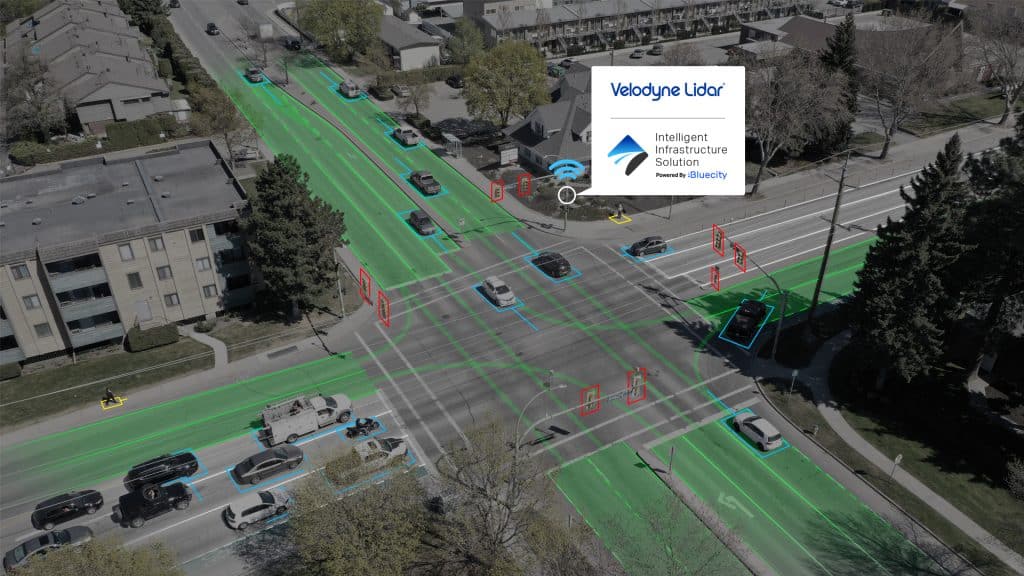How Lidar Can Improve Safety, Efficiency
August 3, 2021 | AUVSI News

AUVSI and SAE International recently hosted the first Business of Automated Mobility Forum, bringing together industry leaders and experts from across the automated mobility industry to develop guiding strategies for success. During an Enterprise Solutions Series presented by Jon Barad, VP of Business Development at Velodyne Lidar, Forum attendees learned about how lidar-based solutions are transforming infrastructure to make communities smarter and safer, today and in the future. Lidar is remote sensing technology and is particularly useful in smart city applications, where connected sensors communicate with each other. Lidar is beneficial because it is reliable, multi-modal, unobtrusive, connected, and privacy-protected. Use cases include traffic management, connected vehicles, last-mile delivery, mapping, security, emergency response, public transit, and defense and industrial applications. Velodyne Lidar’s presentation focused on the value lidar provides in improving traffic management and collecting traffic analytics to improve efficiency and safety. Traffic can also be unsafe. The National Highway Traffic Safety Administration estimates that 94% of accidents are caused by human error. Increased automation that improves prediction and efficiency can also improve safety for drivers, pedestrians, and cyclists. Lidar can also support safety by enabling government agencies to be more proactive and precise. Lidar can provide traffic analytics and efficiency improvement, which include pedestrian safety analysis, near-miss monitoring, and study of congestion areas. Improvements to traffic efficiency improvement are achieved by using lidar to improve signal timing, detect pedestrians in crosswalks, and conduct ramp metering. Velodyne strives to transform lives by advancing safe mobility and smart communities through access to innovative lidar solutions. To learn more about specific use cases where Velodyne’s Intelligent Infrastructure Solution (IIS) enables multi-modal traffic analytics, check out Barad’s presentation below:


